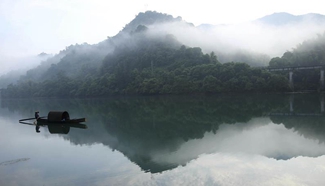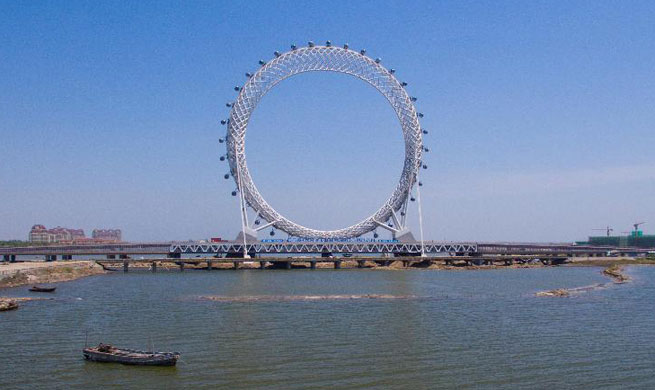SAN FRANCISCO, May 17 (Xinhua) -- A new study shows that a U.S. federal program that subsidizes farmers to plant year-round grasses and native shrubs instead of crops is helping the survival of sage grouse, an exceptionally showy bird and an icon of the American West.
While sage grouse's sagebrush habitat is disappearing in an increasingly developed landscape, the Conservation Reserve Program (CRP) established in 1985 is probably the reason that sage grouse still live in portions of Washington state's Columbia Basin, according to researchers with University of Washington (UW) and their colleagues at state and federal agencies.
The CRP is a voluntary federal program that pays farmers to plant agricultural land with environmentally beneficial vegetation for 10- to 15-year contracts. Of the roughly 24 million acres, or 97,000 square kilometers, planted through the program in the United States, about 1.4 million acres, or 5,670 square kilometers, are in Eastern Washington. The fields are planted with native shrubs and perennial grasses that provide cover for sage grouse and other animals.
"Without these lands, our models predict that we would lose about two thirds of the species' habitat, and that the sage grouse would go extinct in two of three subpopulations," said Andrew Shirk, a research scientist with the UW's Climate Impacts Group and the first author of a paper published in the Journal of Wildlife Management.
In Eastern Washington, the sage grouse population has declined by 77 percent since 1960, and only about 8 percent of the birds' historic habitat remains. The population stabilized at about 1,000 birds in the early 1990s, about when the fields planted as initial part of the CRP program first reached maturity.
Previously, studies suggested Eastern Washington agricultural areas would not be hospitable for the birds.
Sage grouse in other Western U.S. states are threatened mostly by oil and gas exploration and other types of development.
The new study indicates that if Washington's CRP lands were reallocated to be near existing sage grouse populations, to maximize benefit to the birds, their habitat could be increased by as much as 63 percent.
"As the climate changes, species need to be able to move across the landscape to track their habitat," Shirk was quoted as saying in a news release. "Sage grouse habitat is likely to shift under climate change, and yet barriers like major roads and power lines may limit the ability of this species to migrate accordingly.
If there was a strategic vision for how CRP land was allocated, some of it could be used to facilitate the movement of sage grouse and other species over time to track their climate niche."

















